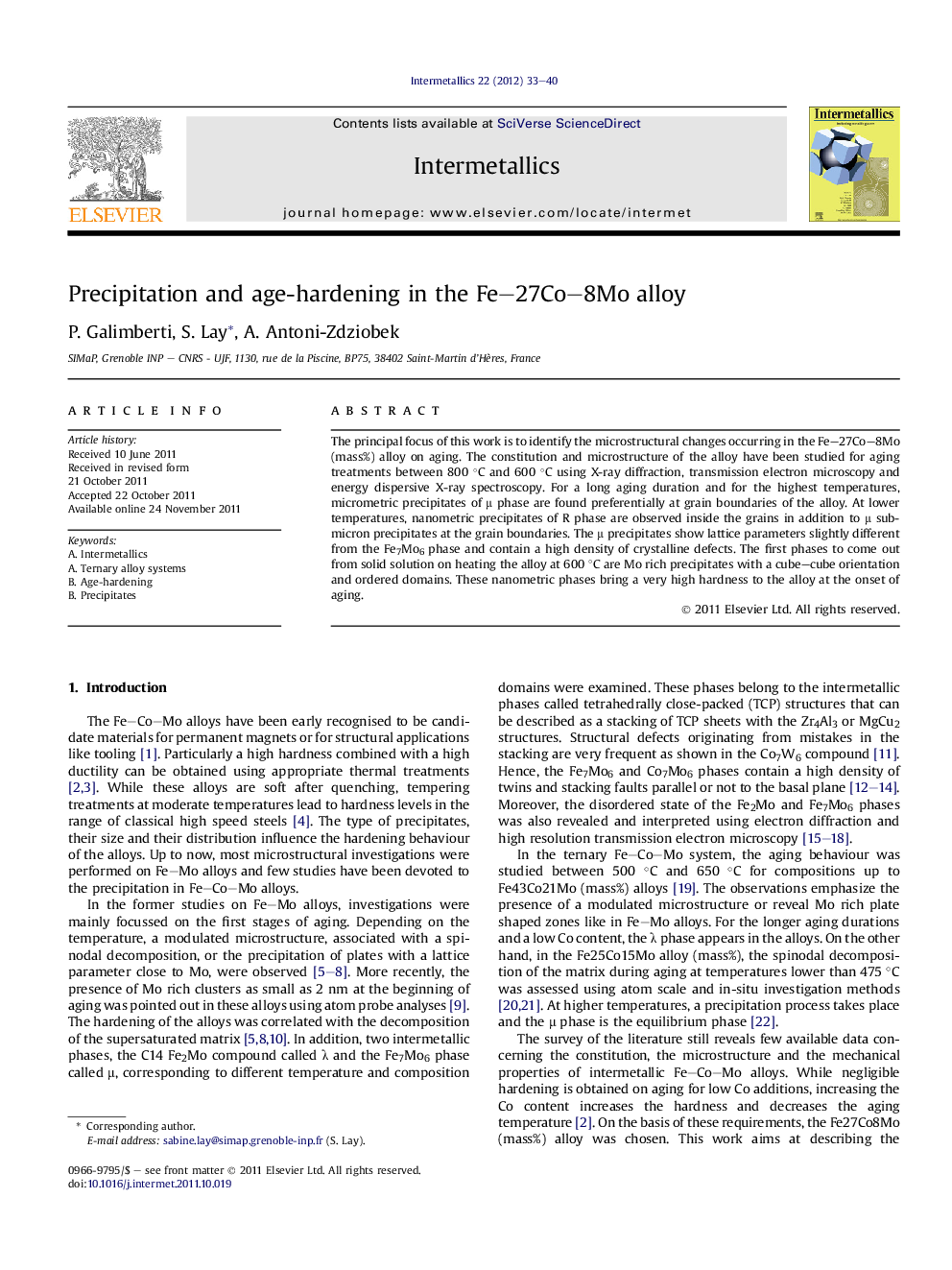| Article ID | Journal | Published Year | Pages | File Type |
|---|---|---|---|---|
| 1600501 | Intermetallics | 2012 | 8 Pages |
The principal focus of this work is to identify the microstructural changes occurring in the Fe–27Co–8Mo (mass%) alloy on aging. The constitution and microstructure of the alloy have been studied for aging treatments between 800 °C and 600 °C using X-ray diffraction, transmission electron microscopy and energy dispersive X-ray spectroscopy. For a long aging duration and for the highest temperatures, micrometric precipitates of μ phase are found preferentially at grain boundaries of the alloy. At lower temperatures, nanometric precipitates of R phase are observed inside the grains in addition to μ sub-micron precipitates at the grain boundaries. The μ precipitates show lattice parameters slightly different from the Fe7Mo6 phase and contain a high density of crystalline defects. The first phases to come out from solid solution on heating the alloy at 600 °C are Mo rich precipitates with a cube–cube orientation and ordered domains. These nanometric phases bring a very high hardness to the alloy at the onset of aging.
Graphical abstractFigure optionsDownload full-size imageDownload as PowerPoint slideHighlights► Annealing the solution treated Fe27Co8Mo alloy at 600 °C increases the hardness. ► The hardness increase at the onset of aging is linked to metastable nanometric phases. ► Mo-rich platelets, ordered domains, R and μ precipitates appear on aging. ► Precipitates are identified owing to TEM and XRD.
